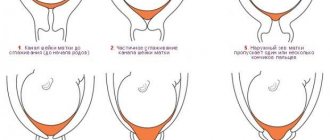Different pediatricians have different points of view on how much a girl should weigh at 9–10 years old. Each child is individual, so the weight of a boy or girl depends on many objective and subjective factors. At primary school age, children have approximately the same height and weight; in high school, the development of boys slows down a little, and girls, on the contrary, “grow by leaps and bounds.”
Only in grades 10–11 does the situation change, and boys take the lead. However, there are exceptions to this rule. Parents often ask pediatricians how much their child should weigh. On average, the weight of a nine-year-old girl is approximately 20 - 40 kilograms. However, in each specific case this value may be different.
Obesity trends
Obesity trends around the world are alarming and span a variety of age, gender and ethnic groups, with significant health and economic costs. Validated computational models are needed to evaluate the impact of alternative interventions and policies. For example, using simplified models can lead to overly optimistic expectations. Computational models of weight and height dynamics may also include monitoring, among other things, individual growth and aging, developing and evaluating interventions for undernutrition and stunting, and diagnosing nutritional and growth disorders. Finally, mathematical models integrate existing results, provide quantitative predictions, and motivate empirical research that addresses the knowledge gaps identified in the model.
A growing literature includes models of body weight dynamics in adults. There are several such patterns of child growth. However, the current models are:
1) do not include infants and children under five years of age.
2) do not capture the dynamics of growth in height.
3) do not consider longer-term dynamics, including changes in body composition due to aging.
4) do not capture racial differences or provide clear points for model adjustment for specific population subgroups.
A documented simulation model and instructions are provided to enable interested researchers and practitioners to perform replications, extensions, and a variety of analyses.
Height and weight standards for a teenage girl
Before starting to calculate weight using formulas, parents need to take a close look at their daughter. You can determine whether she is fat or thin visually.
The body mass index or BMI formula will help you calculate the normal weight of a 13-year-old girl. To do this, you need to divide your weight (kg) by your height (m) squared.
Then you need to find the corresponding number in the table and find out the result.
The formula, which people have used since ancient times, has not lost its relevance today. To find out the normal weight, you need to subtract 100 from the height value. That is, if a girl’s height is 140 cm, then her weight should be 40 kg.
When determining the normal weight, it is necessary to take into account the body type; the child may be:
- Asthenic.
- Normostenic.
- Hypersthenic.
The first type involves a thin-boned, elongated body. Such people have narrow shoulders, long necks, arms and legs. It is difficult to build muscle with this body type. To accurately determine, you need to measure the diameter of your wrist. If it is less than 15 cm, then the person belongs to the first type. An asthenic girl has a reduced or normal body mass index.
The second type is characterized by a developed skeleton, the body is proportionally built, muscle mass is developed evenly. The wrist size will be 15-18 cm. BMI is usually normal.
The third type is the so-called “broad bone”. People of this type look short, relative to their weight. They have a wide chest and a well-developed subcutaneous fat layer; accordingly, the wrist will be more than 18 cm. People of this type have a tendency to obesity.
It is impossible to change your body type; it is determined at the genetic level. But with the help of a properly selected diet and regular physical activity, you can adjust your weight and maintain the required body weight.
Malnutrition in children
Overweight, stunted growth, weight loss, what do these indicators tell us? These indicators are used to measure nutritional imbalances leading to undernutrition (graded from underweight, wasting and stunting) and overweight.
Child height is internationally recognized as an important indicator of nutritional and health status in a population. The percentage of children who are short for age (stunting) reflects the cumulative effects of malnutrition and infections from and before birth. Therefore, this measure may be interpreted as a sign of poor environmental conditions or long-term limitation of the child's growth potential. The percentage of children who are low for age (underweight) may reflect “wasting” (that is, low weight for height), indicating severe weight loss, “stunting,” or both. Thus, “underweight” is a composite indicator and can therefore be difficult to interpret.
How much should a girl weigh: at 12 years old, 10-14
Girls' weight by year - table
Development occurs differently in each child, and this is especially evident during adolescence. Therefore, you cannot focus only on the standard weight parameter; you should definitely correlate this factor with the height of the schoolgirl.
TABLE. See Attachment
How much should a girl weigh: at 12 years old, 10-14
When evaluating results, you should first of all focus on the average value, which indicates that the girl’s weight meets the requirements set for her age group. A deviation from the average parameter not exceeding 8% should not cause much concern for moms and dads. It is enough to weigh your daughter regularly, making sure that the situation is not getting worse.
When to worry
We can talk about the emergence of a threat to health if the weight begins to significantly exceed the average or lag behind it.
If the scale arrow indicates a deviation from the average value of approximately 10-15%, the teenager has a predisposition to being thin/full. At this stage, you don’t have to contact a specialist, limiting yourself to a radical revision of your diet. It is definitely worth tracking the girl’s weight month by month, recording the improvement/worsening of the situation.
If the measurement result indicates a deviation in the range of 15-25%, the danger increases. You should definitely show your daughter to a nutritionist and coordinate the necessary measures with him.
If the norm is violated by more than 30%, the situation seriously threatens the health (in advanced cases, life) of the child. Treatment is carried out under medical supervision.
If completeness is detected
How much should a 12 year old girl weigh? Even for tall schoolgirls, this figure should not exceed 50 kg, otherwise we can safely speak of a violation. The reasons behind it vary.
Calorie foods. Modern children consume excessive amounts of junk food, oversaturated with fats. The figure deteriorates due to the child's passion for sandwiches, chips, and french fries. These dishes need to be removed from the menu at least temporarily, and the same should be done with unhealthy carbonated drinks.
Lack of physical activity. If the daughter is indifferent to sports and spends a lot of time on the computer and TV, problems are inevitable. A way out of the situation may be to enroll in a school section, go to a fitness club, or exercise at home.
Genetic predisposition. You can suspect the influence of heredity on a child’s weight if the parents are familiar with this problem. This does not mean that being overweight should be accepted. Even if you are prone to obesity, proper nutrition in tandem with exercise will have an effect.
Some diseases. If the weighing results show a significant deviation from the average data, it is worth getting examined.
Pathologies of the cardiovascular system, disruptions in the functioning of the pancreas, liver, diabetes mellitus and other problems atypical for a young age are possible consequences of obesity. Therefore, we cannot postpone the fight against it.
If thinness is detected
How much should a girl weigh at 11 years old? The scale needle should not fall below 28 kg. The schoolgirl’s excessive thinness, which threatens her health, can be explained by the following factors.
Diets. Many young ladies 11-14 years old are trying to bring their figure closer to the ideal by purposefully limiting the amount of food they consume. Such measures are extremely harmful. Parents can offer their daughter an alternative such as a balanced diet made up of healthy foods or a gym membership.
Mobility. If thinness is associated with increased activity, there is no serious problem. It is only important to review the menu, make it more high-calorie and nutritious. Meals rich in proteins and carbohydrates help you gain weight. They can be extracted from meat, seafood, vegetables, and fruits.
Height. Intensive growth is a typical phenomenon for a teenager. If your daughter has grown a lot in a short time, going to the doctor and taking home measures can be postponed. There is a high probability that the weight will soon return to normal on its own.
Stress. Losing weight sometimes becomes the result of overexertion, fatigue, and emotional turmoil. We need to find out the source of the problem and help the child cope with it.
Diseases. If you have other alarming symptoms, you should not refuse a medical examination.
How much should a girl weigh 10 years or older? The closer the data is to the average, the better.
What are the consequences?
- Underweight: Because weight is easy to measure, it is the indicator on which most data have been collected in the past. The data showed that the risk of death for children who are light weight increases, and for children who are heavy, the risk is even greater.
- Stunted growth: Children who suffer from stunted growth as a result of poor nutrition or recurrent infections tend to be at greater risk of illness and death. Stunting is the result of long-term nutritional deficiencies and often results in mental retardation, poor school performance, decreased productivity, and decreased intellectual abilities.
This in turn affects economic productivity at the national level. Short women are at greater risk for obstetric complications because they have smaller pelvises. Small women are at greater risk of having a low birth weight baby, contributing to the intergenerational cycle of malnutrition.
- Wasting: Wasting in children is a symptom of acute malnutrition, usually as a consequence of insufficient food intake or high rates of infectious diseases, especially diarrhea. Wasting in turn impairs immune system function and can lead to weight gain and susceptibility to infectious diseases and increased risk of mortality.
- Overweight: Childhood obesity is associated with a higher likelihood of obesity in adulthood, which can lead to various disorders and diseases such as diabetes and cardiovascular disease and, as a result, skin diseases. The risks for most noncommunicable diseases resulting from obesity depend in part on age and the onset and duration of obesity. Children and adolescents may suffer both short- and long-term health consequences, the most significant of which are:
cardiovascular diseases, mainly heart disease and stroke
• diabetes • musculoskeletal disorders, especially osteoarthritis • endometrial, breast and colon cancer.
What does weight depend on?
It depends on many factors, for example:
- Heredity. If your baby has thin parents, his body type will most likely be the same;
- Nutritional features. A baby whose nutrition is properly organized grows well and gains weight, and does not suffer from excess weight;
- Work of the endocrine system. Children suffering from endocrine diseases, such as diabetes mellitus or thyroid diseases, often have a weight higher or, conversely, lower than normal;
- Level of physical activity. A child who attends sports clubs and plays active games in the fresh air every day rarely has problems with obesity.











